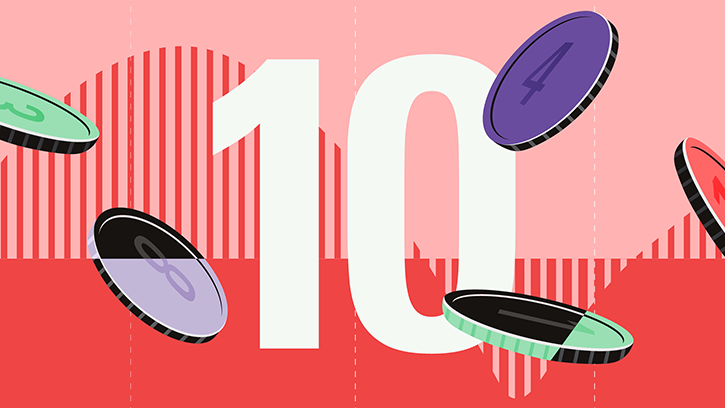New Listings
iShares launched two new swap-based ETFs on the London Stock Exchange. These are the first swap-based ETFs that iShares has ever launched (its existing swap-based funds were acquired). The new ETFs feature some investor-friendly, risk reducing features. These include engaging multiple swap counterparties (RBS, UBS, and Credit Suisse), over-collateralisation, full daily disclosure of collateral holdings, and disclosure of swap spreads (a first in the industry). For more on recent efforts to increase the transparency of swap-based ETFs, please see our recent article “Credit Where Credit’s Due”.
The iShares MSCI Russia Capped Swap ETF (LSE ticker symbol: RUSS) charges a total expense ratio (TER) of 0.74% and tracks the performance of the MSCI Russia Capped Index, which includes companies whose market capitalisation puts them in the top 85% of the universe of investable Russian equities. The iShares S&P CNX Nifty India Swap ETF (ticker symbol: NFTY) charges a TER of 0.85% and tracks the performance of the S&P Nifty India Index, which includes 50 companies listed in India comprising about 60% of the country's equity market capitalisation. The difficulties associated with tracking emerging market benchmarks through physical replication lend them well to being tracked by swap-based funds.
Source launched a new ETF tracking a hedge fund strategy on the Deutsche Börse. The BofA ML Hedge Fund Factor Euro Source ETF tracks the performance of the Merrill Lynch Factor Model Index, which was designed to mimic the performance of a fund-of-hedge funds without investing directly in hedge funds. The index is based on a quantitatively-determined portfolio of equities from the S&P 500, Russell 2000, MSCI EAFE and MSCI Emerging Markets Indices. It takes both long and short positions in these indices and makes monthly adjustments based on new data inputs. It joins the US dollar version of the ETF already listed on the London Stock Exchange (ticker symbol: SMLD). Both versions of the ETF charge an annual TER of 0.70%. The annual fee is high relative to an average equity ETF, but is much lower than the typical expenses levied by funds-of-hedge funds. The ETF also has the benefit of greater liquidity as there are no lockup arrangements, as well as greater transparency.
Lyxor has launched five new Asia ex-Japan equity ETFs on the London Stock Exchange and Euronext Paris. The funds track different MSCI sector indices, including Consumer Staples (ticker symbol: STAA), Financials (FNLG), Information Technology (TNOA), Materials (MATA), and a capped Infrastructure index (IFRG). Each ETF charges a TER of 0.65%. The London-listed ETFs are denominated in pounds sterling and US dollars, while the Paris listing is denominated in euros.
Lyxor listed the first ETF in Poland, on the Warsaw Stock Exchange. The fund tracks the performance of the WIG20, the Polish blue chip index. While the ETF will be primarily marketed to local retail investors, there is also interest from international and institutional investors, according to Lyxor. The company has applied for approval to roll out additional ETFs in Poland in the future.
C-Quadrat launched a new ETF on the Deutsche Borse Xetra. The fund tracks the performance of the C-Quadrat European Equity Index, which is designed to follow the daily price movement of EURO STOXX 50 Index futures, multiplied by an exposure factor. This exposure factor is determined daily based on a proprietary model that includes historical date for macroeconomic, fundamental and technical variables, and can be one of five factors: -1, 0, 1, 1.5, 2. The objective behind this unusual methodology is to generate positive returns during both bull and bear markets, i.e. a market-neutral strategy. The implied use of leverage could make the index underperform a straight EURO STOXX 50 futures index in times of high volatility, depending on the prediction accuracy of the underlying exposure factor model. The underlying derivative usage also means that there could be a negative roll yield when moving to the next contract from the expiring contract in the presence of contango in the market. The ETF charges a TER of 0.70%.
Best and Worst Performers For the Week of September 20 - 24
The automotive sector dominated the list of top performing ETFs for the week thanks to a large increase in new sales of commercial vehicles in the EU in August. German business confidence hit a three-year high and a US durable goods order report was better-than-expected.
Natural gas and coffee-tracking ETPs were amogst the list of the worst performers for the week. Natural gas prices fell in the US as several tropical storms passed through the Gulf of Mexico--a key producing region--without incident. Coffee prices pulled back after having recently hit a ten-year high. Starbucks, the world's largest coffee shop chain, announced its intentions to increase prices in order to protect margins.

























